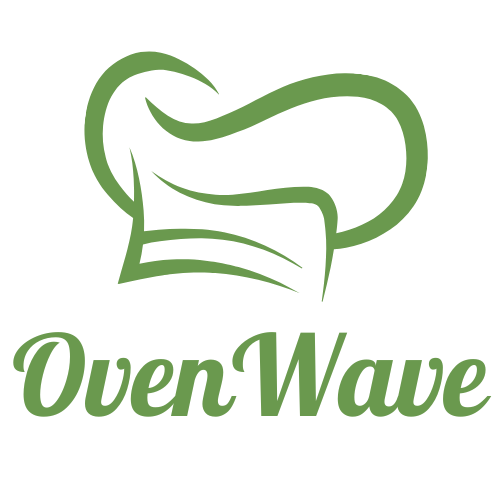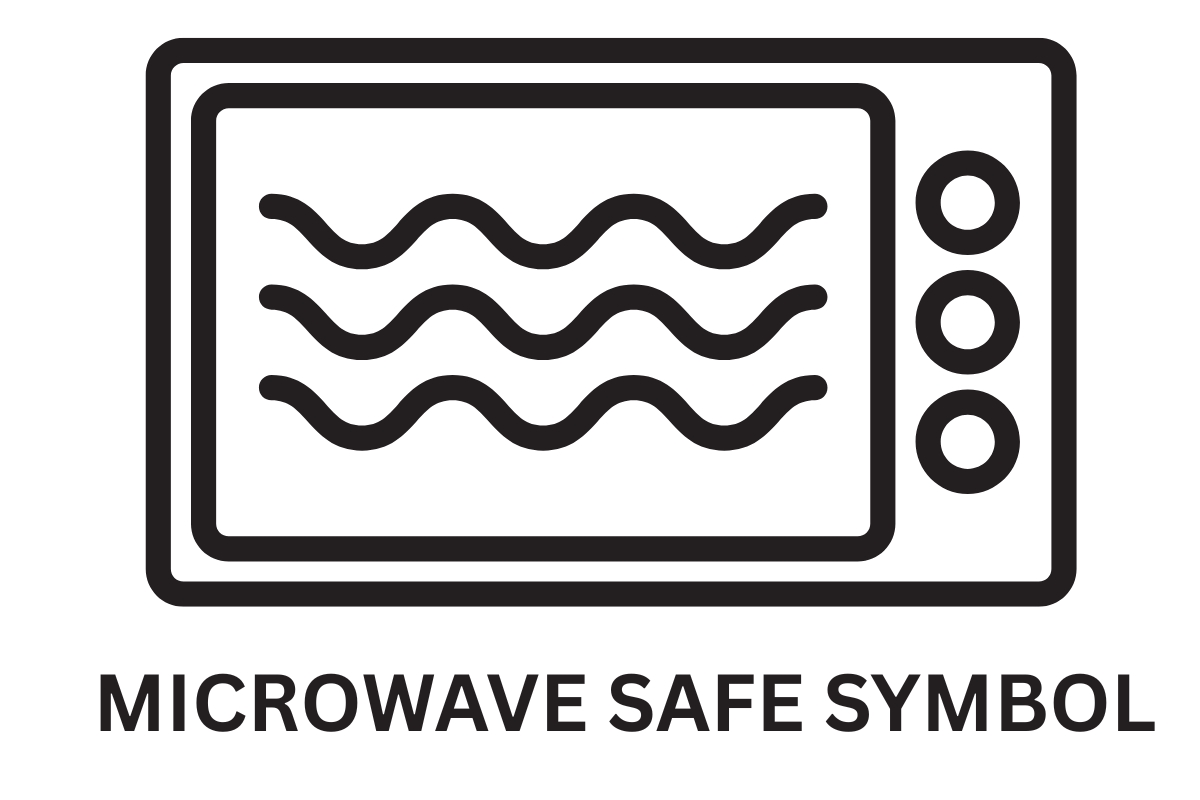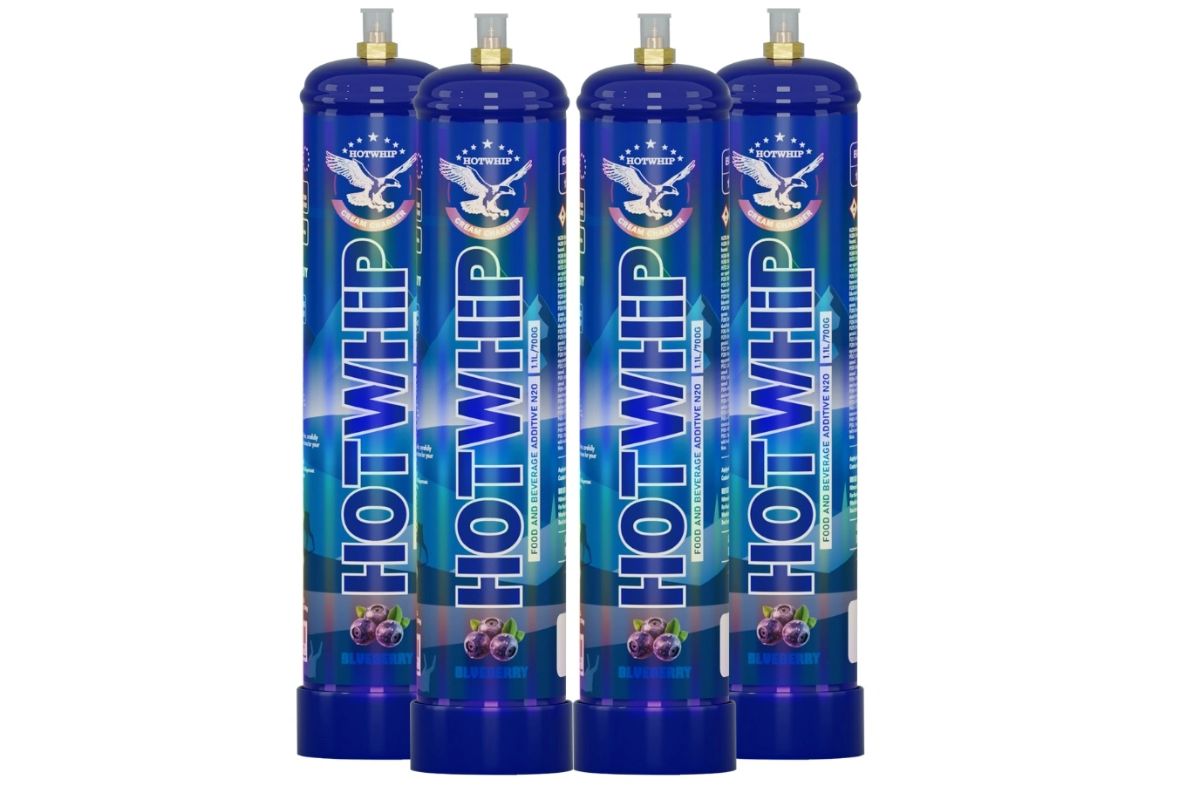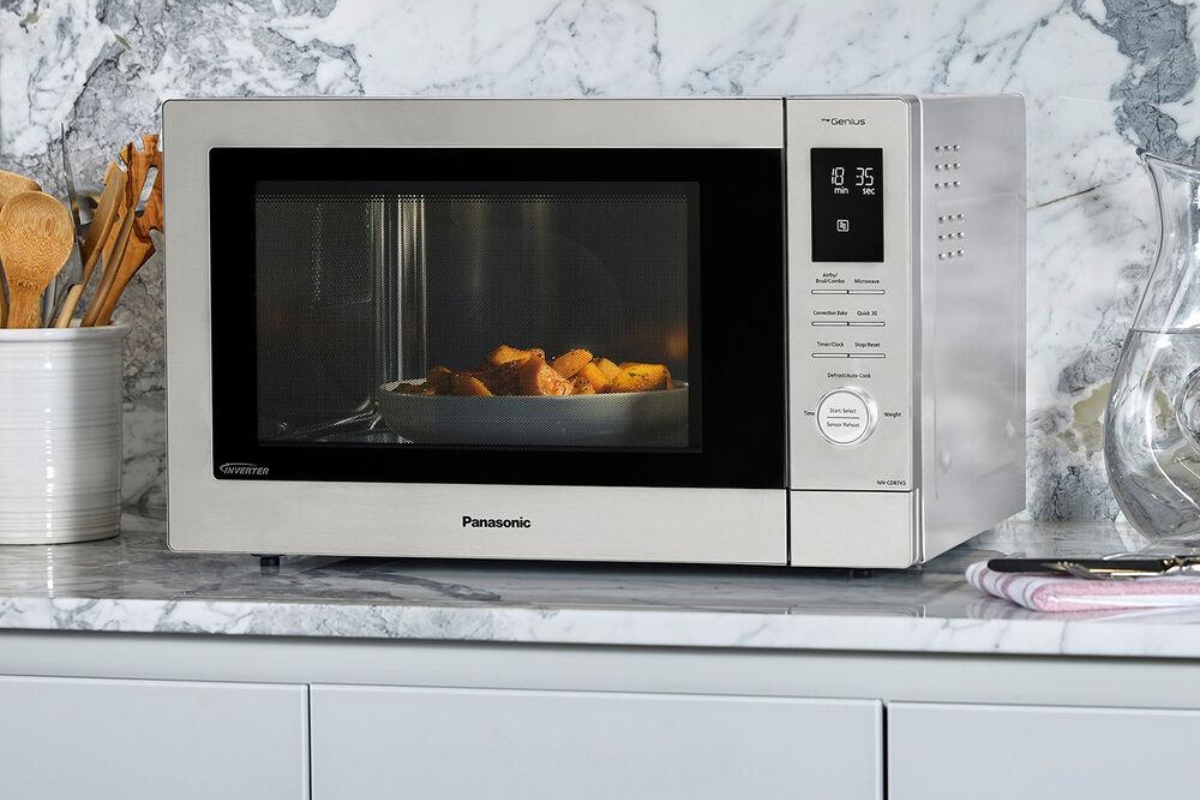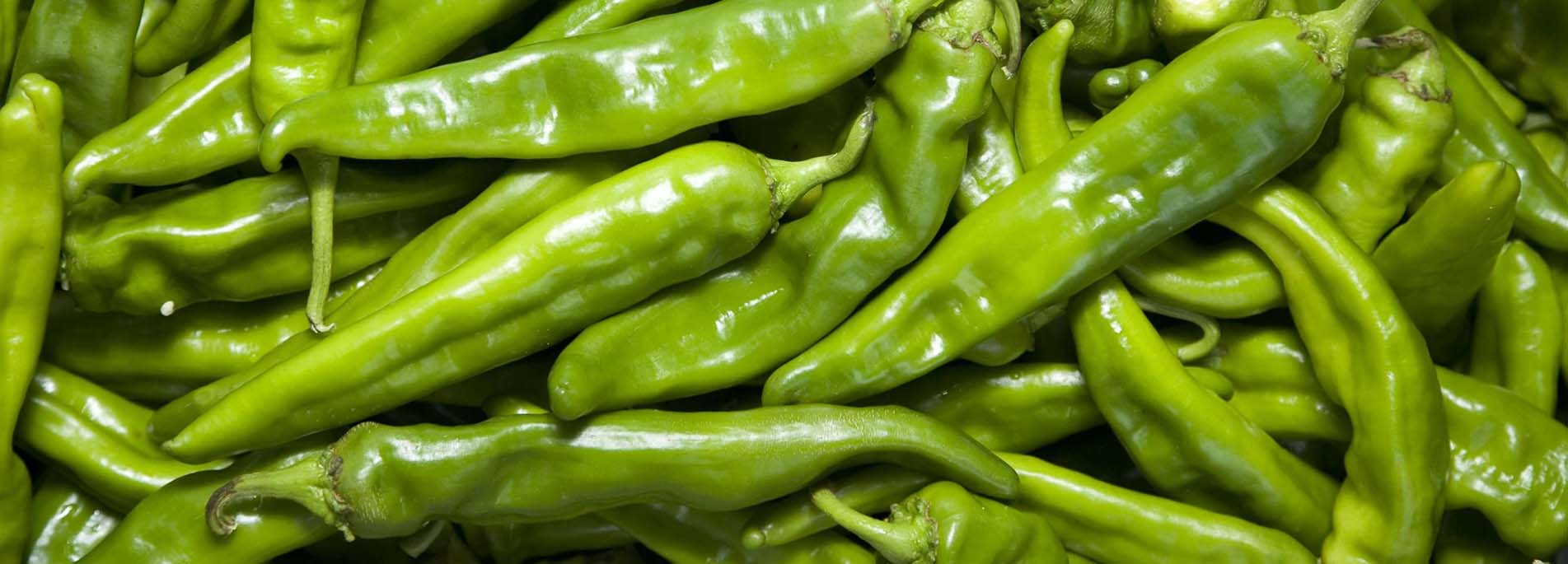Microwave safe symbols are more than just a mark on your cookware. They tell you whether a container is safe to use in a microwave, preventing accidents like melting, leaching chemicals, or even starting fires. It’s easy to overlook, but using the right container can impact your food’s taste, texture, and your kitchen’s safety. With so many different materials out there, it’s important to know which ones are safe to use and which ones aren’t.
When I first started using a microwave, I didn’t pay much attention to these symbols. I learned the hard way by using non-microwave-safe containers. Trust me, it wasn’t a fun experience. Overheating food and having to deal with a melted container or worse, a kitchen full of smoke, isn’t something I want anyone to go through. That’s why understanding the microwave safe symbol is crucial for anyone who uses a microwave regularly.
In this guide, we’ll cover everything you need to know about microwave safe symbols. We’ll dive into what the symbol means, how to identify it on your cookware, and how to ensure you’re using safe containers. I’ll also share some tips on what happens if you use the wrong container and how to avoid the most common mistakes. By the end, you’ll be confident in choosing the right cookware for your microwave, and you’ll know exactly how to keep your kitchen safe while using it.
Table of Contents
ToggleWhat Does the Microwave Safe Symbol Mean?
The microwave safe symbol indicates that a container or cookware is safe to use in the microwave without the risk of it melting, catching fire, or releasing harmful chemicals. This symbol is a simple, yet crucial, guide for anyone looking to heat or cook food in the microwave. If a container has this symbol, it means it’s been tested and meets the standards to handle the heat from microwaves.
Using the wrong cookware in the microwave can cause serious problems, like the container warping, releasing toxins, or even causing sparks. The microwave safe symbol gives you peace of mind, knowing that your container is safe for microwave use. It’s an easy way to ensure that you are using the right cookware to avoid accidents and keep your kitchen safe.
Common Designs and Variations of the Symbol
You might have noticed the microwave safe symbol on various cookware, but it may not always look the same. There are a few common designs that you’ll find. The most recognizable symbol looks like a square with wavy lines inside, representing microwave waves. It’s usually followed by the words “microwave safe” or a similar phrase.
Another variation includes the microwave icon – a simple microwave image – or just a letter “M” with lines indicating microwave waves. These symbols are sometimes accompanied by a number, indicating the specific temperature or heat resistance level of the container.
Different regions and manufacturers may have their own versions, but the idea remains the same: it shows that the cookware is safe for use in the microwave. Whether you’re using a glass, ceramic, or plastic container, the microwave safe symbol helps you make the right choice for safe cooking.
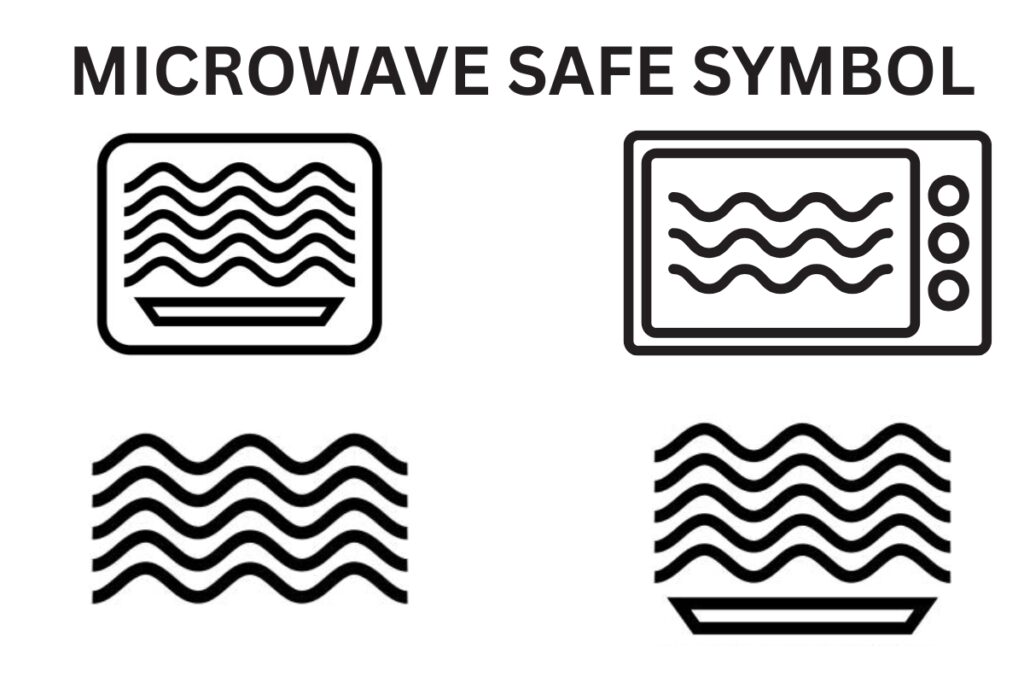
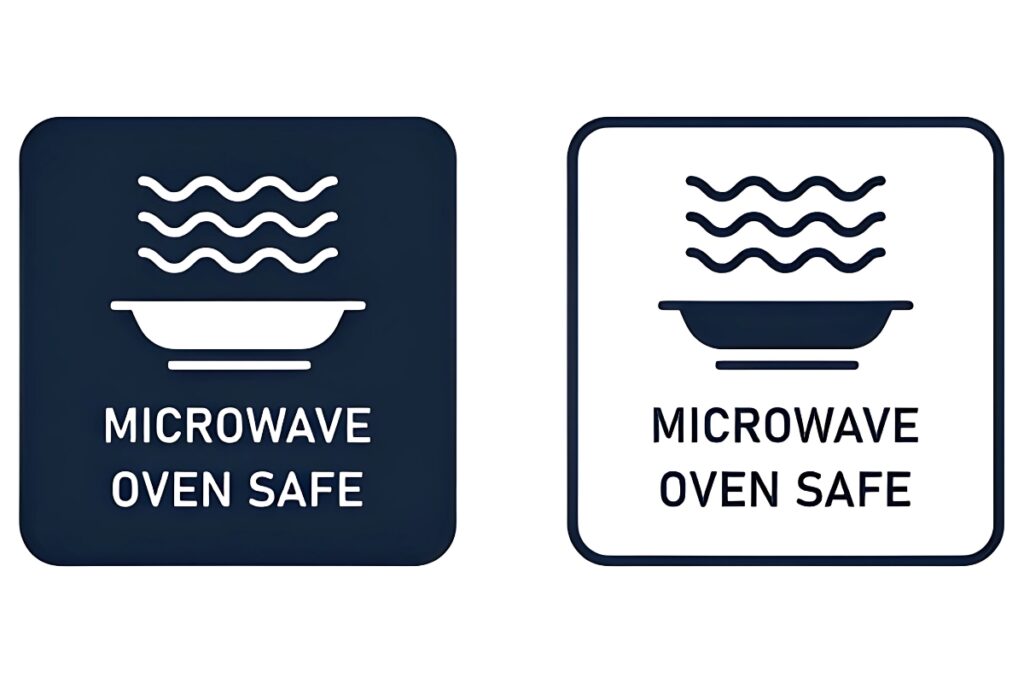
How to Identify Microwave Safe Symbols on Cookware
You can typically find the microwave safe symbol on the bottom of containers, plates, bowls, and other cookware. It’s usually printed or embossed directly onto the bottom surface of the item. Sometimes, the symbol may also appear on the packaging when you purchase the item. Be sure to check the bottom or underside of any container you plan to microwave.
It’s important to inspect the symbol before you use any cookware, especially if it’s something you’re unsure about. The symbol should be visible and clear, making it easy to recognize. If you can’t find it, it’s better to double-check with the manufacturer to avoid potential mishaps.
How to Read the Microwave Safe Markings
The microwave safe symbol is generally simple and easy to interpret. Look for a square with wavy lines inside or an image of a microwave with waves. Some containers may also have the words “microwave safe” printed next to the symbol.
If there’s no visible symbol, it’s always a good idea to check the instructions or packaging for any guidance on microwave use. Manufacturers will often note whether an item is microwave-safe or not. When in doubt, avoid using the container in the microwave until you are certain it’s safe.
Differences Across Materials (Glass, Ceramic, Plastic)
The microwave safe symbol can appear on various materials like glass, ceramic, and plastic. Each of these materials has its own characteristics when it comes to microwaving.
Glass
Most glass cookware is microwave safe, especially heat-resistant glass like Pyrex. However, always check for the symbol, as some glass containers may not handle sudden temperature changes well and could crack.
Ceramic:
Ceramic items like mugs and plates are often microwave-safe, but some may have metallic accents or glazes that are not. Always check for the microwave safe symbol to be sure.
Plastic:
Plastic is a bit trickier. While some plastics are microwave-safe, others may warp, melt, or release harmful chemicals when heated. Look for the microwave safe symbol on the plastic containers to confirm they can handle microwave heat.
Each material type needs to be checked for the microwave safe symbol because it ensures the container is specifically designed to handle microwave heat without breaking down.
Materials That Usually Are Microwave Safe
Glass Cookware
Glass is one of the most common materials used in microwave-safe cookware. Heat-resistant glass, like Pyrex, is often marked as microwave safe. Glass doesn’t react with food and won’t release harmful chemicals when microwaved, making it a safe option for cooking or reheating food. Just be sure that the glass cookware is labeled as microwave-safe, as some types of glass can crack or shatter if exposed to sudden temperature changes.
When using glass cookware, always check for the microwave safe symbol. If the glass is marked, it should handle the heat of the microwave just fine. However, avoid using glass that’s not labeled as microwave-safe, as it might not withstand the heat and could break.
Ceramic Cookware
Ceramic is another material that’s usually safe for the microwave, but it’s important to check for the microwave safe symbol. Ceramic dishes like plates, bowls, and mugs are often microwave safe, but some may have decorative metallic accents or glazes that are not. These metallic touches can cause sparks or fires when microwaved, so it’s best to ensure that the ceramic cookware is free of any metallic elements.
To be safe, always look for the microwave safe symbol on ceramic cookware. This symbol confirms that the ceramic dish can handle the microwave heat without cracking or releasing harmful chemicals.
Certain Plastics
Some plastics are microwave-safe, but not all of them. BPA-free plastics, such as containers marked with the microwave safe symbol, are typically safe to use in the microwave. These plastics are designed to withstand the heat and won’t melt or warp during normal microwave use. However, avoid using plastic containers that are not specifically labeled as microwave-safe, as they can release harmful chemicals or even melt in the microwave.
When using plastic, always check for the microwave safe symbol and follow any guidelines provided by the manufacturer. Not all plastic is created equal, so it’s essential to use only the ones designed for microwave use.
👉Want to make sure your containers are microwave-safe? Check out our guide on 5 Microwave Safe Materials
Materials That Are Not Microwave Safe
Metals
Metal is one of the most dangerous materials to use in the microwave. Aluminum foil, metal pans, and other metal items should never be used in the microwave. Metals can cause sparking, which can damage the microwave or even cause a fire. The microwave waves bounce off metal surfaces and can create electrical arcs that lead to dangerous situations. Even small metallic parts on some containers, like gold or silver trim, can cause problems.
Always avoid placing any metal in the microwave. If you’re unsure about a material, it’s better to be safe and use a different container.
Foam Containers
Foam containers, like Styrofoam, should never be used in the microwave unless they are specifically labeled as microwave-safe. These containers can melt when exposed to microwave heat, potentially contaminating your food and making a mess in your microwave. Foam is not designed to handle the high temperatures of microwaving, and it can release harmful chemicals as it melts.
If you have to heat food in foam containers, transfer it to a microwave-safe dish first. It’s always safer to use containers that are clearly marked as microwave-safe.
Non-Microwave Safe Plastics
Not all plastics are microwave safe. Some types of plastic containers can warp, melt, or even release harmful chemicals into your food when microwaved. Plastics that are not labeled as microwave-safe should never be used in the microwave. These plastics are often made with chemicals that can leach into your food when exposed to heat.
If you’re unsure whether a plastic container is microwave-safe, always check for the microwave safe symbol. Some plastics may also crack over time with repeated microwave use, even if they’re initially labeled as safe. Stick to BPA-free plastics for a safer option.
Why These Materials Are Unsafe
The materials mentioned above are unsafe because they don’t respond well to microwave heat. Metals can cause sparking, foam can melt and release harmful chemicals, and non-microwave-safe plastics can break down and leach chemicals into your food. These materials either don’t have the ability to withstand microwave heat or they react poorly with microwave radiation, making them dangerous to use.
It’s important to always use microwave-safe containers to avoid these risks. Look for the microwave safe symbol to ensure that the container you’re using is safe for cooking or reheating in the microwave.
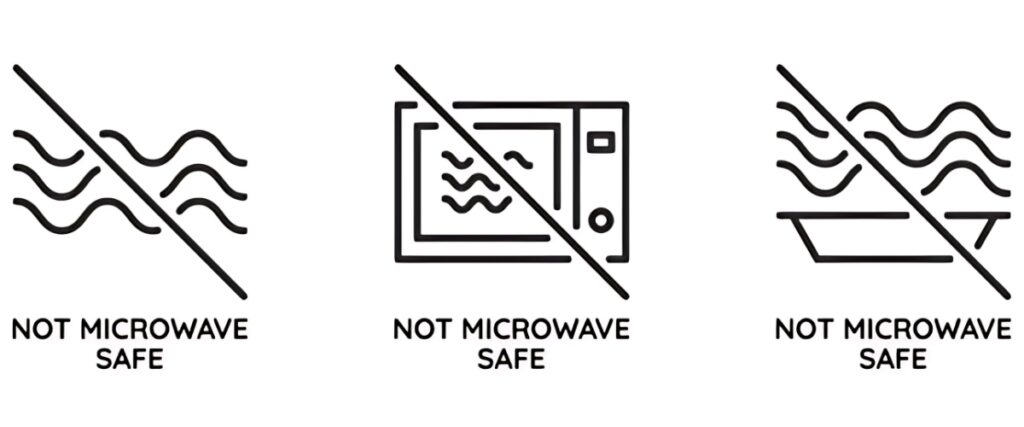
Microwave Safe Symbol vs. Other Kitchen Symbols
Dishwasher Safe Symbol
The dishwasher safe symbol usually looks like a plate with a few lines above it, representing water droplets. This symbol tells you that the item is safe to wash in a dishwasher. Items with this symbol can handle the heat and water pressure inside a dishwasher without getting damaged. However, just because an item is dishwasher safe does not mean it is microwave safe. Always check for the microwave safe symbol if you plan to use it in the microwave.
Oven Safe Symbol
The oven safe symbol is often represented by a simple symbol of an oven or the word “oven safe.” This symbol means that the container can handle high temperatures in the oven. It’s safe to use in baking, roasting, or broiling. However, just like the dishwasher safe symbol, this does not necessarily mean the container is microwave safe. Some materials that are safe for the oven may not be designed to handle microwave heat.
Freezer Safe Symbol
The freezer safe symbol typically looks like a snowflake or the word “freezer safe.” It tells you that the item can withstand low temperatures without cracking or becoming brittle. Containers with this symbol are designed to hold food in the freezer without damage. But just because something is freezer safe doesn’t mean it is safe for use in the microwave. Freezing and microwaving are two different processes, and the symbol only indicates safety for one, not both.
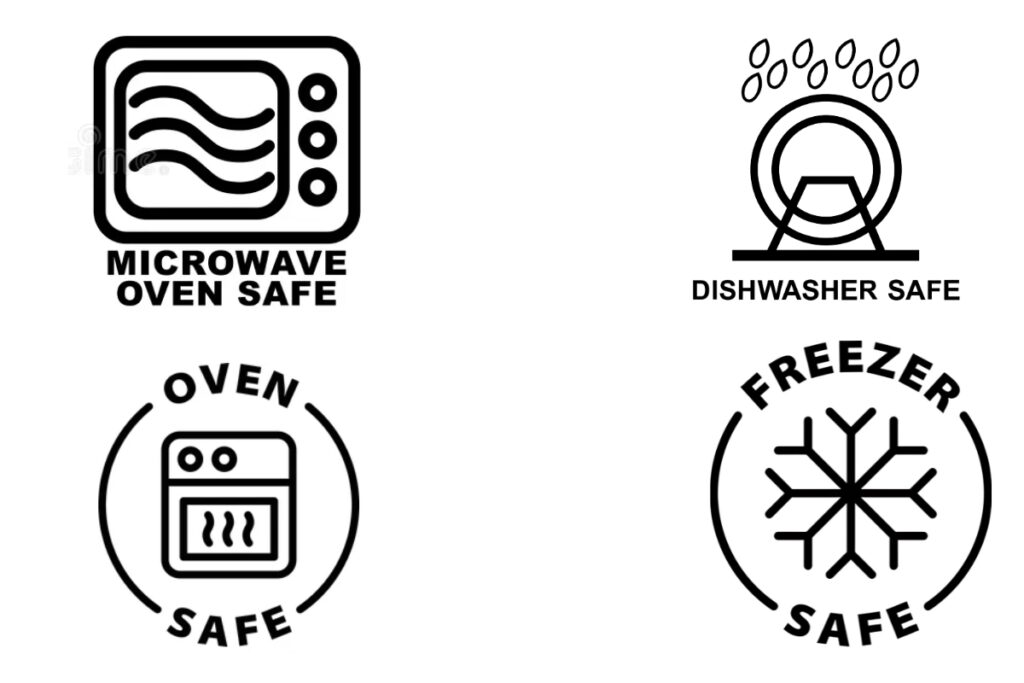
Key Differences and What Each Symbol Means
Each of these symbols tells you about the safe use of containers in different conditions. The microwave safe symbol specifically ensures that a container can handle the heat and radiation inside a microwave without warping, leaching chemicals, or causing a fire. On the other hand, symbols like dishwasher safe, oven safe, and freezer safe refer to different heat levels or environmental conditions that a container can withstand.
The key differences are that:
- Dishwasher safe means it can survive water and heat from the dishwasher.
- Oven safe means it can handle high temperatures in an oven.
- Freezer safe means it can tolerate low temperatures in the freezer.
Just because a container is one of these doesn’t mean it is microwave safe. Always check for the microwave safe symbol before placing a container in the microwave.
How Microwave Safe Symbols Are Tested and Certified
The Testing Process for Microwave Safety
Before cookware can be marked with the microwave safe symbol, it goes through a testing process to ensure it can safely withstand microwave heat. The testing involves exposing the cookware to microwave radiation and high temperatures to check how the material reacts. The goal is to see if the container can handle the microwave’s heat without warping, cracking, or releasing harmful substances.
During these tests, the cookware is typically placed in a microwave with food inside, and it is checked for any signs of damage. If the material performs well under the test conditions, the manufacturer can apply the microwave safe symbol. This ensures that consumers can trust the cookware to be safe for microwave use.
Certification Standards (e.g., FDA, International Standards)
To ensure safety, microwave-safe cookware often needs to meet specific certification standards. In the United States, the Food and Drug Administration (FDA) sets guidelines for microwave-safe materials. The FDA regulates materials to ensure they do not release harmful chemicals when microwaved. Many other countries have their own similar standards and guidelines, like the European Union and Canada.
Certification standards require cookware to undergo rigorous testing to confirm it is safe for use in microwaves. When a manufacturer complies with these standards, it allows them to label the cookware with the microwave safe symbol. By following these standards, consumers can have confidence in the safety of the cookware they use.
Microwave Radiation Tolerance and Material Testing
Microwave radiation tolerance refers to a material’s ability to handle the electromagnetic waves produced by microwaves without being damaged. This is an important part of the testing process, as some materials react poorly to microwave radiation, either by overheating, melting, or even causing a fire.
Manufacturers test materials for microwave radiation tolerance by exposing them to different levels of radiation to see how they perform. Materials like glass, ceramic, and microwave-safe plastics are tested to ensure they can absorb heat evenly without breaking down or releasing toxins. Materials that fail to pass the test cannot be labeled as microwave safe.
Each material used in cookware is thoroughly tested for how it handles the heat from microwave radiation, which helps ensure that it won’t cause problems during normal microwave use.
What Happens If You Use Non-Microwave Safe Containers?
Risks of Using Non-Microwave Safe Cookware
Using non-microwave safe cookware can lead to several risks. First and foremost, the container can warp or melt when exposed to the microwave’s heat. This can create a mess in your microwave and ruin your container. In some cases, the heat from the microwave can cause chemicals to leach out of certain plastics, which can contaminate your food.
Another risk is sparking. If you use metal or cookware with metal trim, the microwave can cause it to spark, which can lead to a fire or damage to the microwave. For these reasons, it’s important to only use containers that are clearly labeled as microwave safe.
Real-Life Examples of Mishaps
I’ve heard many stories of people accidentally using the wrong containers in the microwave. One story that stands out is when a friend used a plastic container that wasn’t microwave safe. The plastic melted, and the microwave was filled with smoke. Not only did the microwave get damaged, but the food was ruined as well. The worst part? The melted plastic made it difficult to clean.
Another time, I witnessed a metal fork in a microwave. It didn’t take long for sparks to fly, and the microwave started smoking. Luckily, there was no fire, but it was a close call. It’s easy to forget to remove metal objects from your microwave, but this can be very dangerous.
These examples show how using the wrong cookware can cause not only messes and food waste but also potentially dangerous situations.
How to Spot Unsafe Cookware
To avoid these problems, always check for the microwave safe symbol on cookware before use. If the cookware has metal, decorative accents, or is not labeled microwave safe, it is likely unsafe for the microwave. If the container is made from plastic, check if it is marked as BPA-free and microwave-safe.
If you’re ever unsure, it’s safer to switch to a different container. Also, be cautious with older containers. Even if a container used to be microwave safe, it may become unsafe after years of use or damage.
Tips for Beginners: Using Microwave Safe Cookware Safely
How to Choose the Right Microwave Safe Cookware
When choosing cookware for the microwave, always look for the microwave safe symbol. This symbol ensures that the container has been tested and is safe for use in the microwave. If you are buying new cookware, check the packaging for the symbol. For items you already own, check the bottom or underside for the symbol.
Additionally, consider the material. Glass and ceramic are usually good options, as they handle microwave heat well. If you prefer plastic, make sure the container is labeled as BPA-free and microwave safe. Avoid plastic containers that are old, scratched, or have any signs of damage, as they can become unsafe over time.
Best Practices for Safe Microwave Use
To microwave your food safely, here are a few best practices to follow:
- Use microwave-safe containers: Always check for the microwave safe symbol.
- Avoid using metal: Never put metal containers, utensils, or foil in the microwave, as they can cause sparks.
- Cover your food: Use a microwave-safe lid or paper towel to cover your food to prevent splatters. Make sure the cover isn’t sealed tightly, as steam needs to escape.
- Stir food evenly: Stirring food helps it cook more evenly, reducing the chances of overheating.
- Use appropriate microwave settings: Adjust the microwave settings based on the type of food you’re heating. For instance, use a lower power setting for reheating delicate foods.
By following these practices, you can ensure that your microwave use is both efficient and safe.
Common Mistakes to Avoid When Microwaving
As with anything, there are a few common mistakes to watch out for when microwaving food:
- Using non-microwave-safe containers: This is the most common mistake. Always double-check the cookware before microwaving.
- Microwaving metal: Even small pieces of metal like a fork or a plate with gold trim can cause sparks, leading to a dangerous situation.
- Not stirring food: Food may heat unevenly in the microwave, causing hot spots and cold spots. Stir your food occasionally to avoid this.
- Microwaving sealed containers: Sealing a container too tightly can cause it to explode due to pressure buildup. Always leave a little space for steam to escape.
- Overheating food: Microwaving for too long can cause food to dry out, burn, or even explode. Be mindful of your cooking times and power settings.
Avoiding these mistakes will help you use your microwave safely and effectively, ensuring your food heats evenly without any mishaps.
Common Misconceptions About Microwave Safe Symbols
There are several misconceptions when it comes to microwave safe symbols. It’s important to clear up these misunderstandings so you can make safer choices in the kitchen.
Misconception 1: “Plastic is Always Unsafe”
One common myth is that plastic containers are always unsafe for microwaving. While it’s true that some plastics can melt or release chemicals when heated, not all plastics are unsafe. Many plastic containers are designed specifically for microwave use and are BPA-free. Always check for the microwave safe symbol, and avoid using old or damaged plastic containers.
Misconception 2: “All Glass Is Microwave Safe”
Another myth is that all glass cookware is microwave safe. While heat-resistant glass like Pyrex is typically safe for microwaving, not all glass is created equal. Some glass containers may crack or break when exposed to high microwave heat, especially if they’re not labeled as microwave safe. Always check the symbol before microwaving any glass containers.
Other Common Myths and Misunderstandings
Other misconceptions include thinking that microwave-safe containers can be used for any type of food or that the microwave safe symbol guarantees that a container can withstand any microwave setting. In reality, some containers are only microwave-safe at lower power settings, or for reheating only. Always follow the manufacturer’s guidelines and be cautious when microwaving different types of food.
How to Test If a Container Is Microwave Safe at Home
Sometimes, you might find yourself wondering whether a container is safe to use in the microwave. There are a few simple tests you can try at home to check.
The Water Test: A Simple Method
One of the easiest tests to check if a container is microwave-safe is the water test. Here’s how to do it:
- Fill the container with water.
- Place it in the microwave and heat it for 30 seconds to 1 minute.
- Carefully touch the container. If the container is cool or only slightly warm, it is microwave safe. If it’s too hot, it’s not microwave-safe and should be avoided.
This test works well for most types of cookware, including glass and ceramic containers.
Other Methods for Testing Cookware at Home
If you’re unsure about a container, another method is to check if the container is labeled with the microwave safe symbol. If there’s no symbol, look for other information, like manufacturer instructions or the material type. You can also use a small piece of plastic wrap to see if it melts under microwave heat. If the plastic wraps or changes shape, the container is not microwave-safe.
What to Look for if the Container Is Unsafe
If you’re testing a container and notice any of the following, it’s best to avoid using it in the microwave:
- The container gets excessively hot.
- It warps or melts under heat.
- There’s any smell of chemicals.
- It discolors after being microwaved.
If any of these things happen, the container is not microwave safe and should be replaced with a safer option.
How to Care for Microwave Safe Cookware
Taking care of microwave-safe cookware will help extend its life and ensure it stays safe to use. Here are a few tips for maintaining your cookware.
How to Maintain Microwave Safe Cookware
To maintain your microwave-safe cookware, always clean it after each use. Avoid using abrasive scrubbers that can scratch the surface. Stick to gentle sponges or soft cloths. For deep cleaning, follow the manufacturer’s instructions. Regularly inspect your cookware for cracks, chips, or other signs of wear. If you notice any, it’s time to replace the item.
Storing and Handling to Avoid Damage
Store your microwave-safe cookware carefully. Avoid stacking heavy items on top of them, as this can cause cracking or warping. When handling, be gentle, especially with glass or ceramic items, as they can break if dropped. Also, avoid sudden temperature changes, such as placing a hot container directly in cold water.
Extending the Life of Your Cookware
To extend the life of your microwave-safe cookware, try to avoid microwaving empty containers or overcooking food for extended periods. Frequent overuse or overheating can weaken the material, making it unsafe to use in the future. Regular checks and proper care will help keep your cookware in good shape for years.
Microwave Safe Symbol in Different Countries
The microwave safe symbol can vary slightly depending on the country or region. While the general idea remains the same, there are some differences to be aware of when buying cookware from other countries.
Variations in Microwave Safe Symbols Worldwide
In some countries, the microwave-safe symbol may look slightly different. For example, in the US, it’s common to see a square with wavy lines. In other regions, the symbol may be an image of a microwave or just the words “microwave safe.” Be sure to check the symbol, regardless of where you are, to ensure the cookware is safe for use in a microwave.
What to Know When Buying Cookware from Abroad
When buying cookware from other countries, it’s important to know that microwave safety standards can vary. In some countries, the materials used may not meet the same safety standards as those in your country. Always look for the microwave safe symbol and, if possible, check for any certification marks that show the cookware has passed safety tests.
Different Standards and Testing Across Regions
Different regions may have their own safety standards for cookware, which could affect the way products are tested and certified. For example, European standards for microwave safety may be more stringent than those in some other countries. If you’re unsure about the safety of a product from abroad, it’s always best to research or consult the manufacturer’s guidelines.
FAQs:
Can I microwave food in any glass container?
Not all glass containers are microwave safe. Look for the microwave safe symbol on the bottom to ensure the glass can withstand microwave heat. Even though glass is usually safe, certain types can break under microwave conditions if they’re not marked.
Is it safe to microwave food in Tupperware or plastic containers?
Some plastic containers are microwave-safe, but not all. Make sure the plastic is marked with the microwave safe symbol. It’s best to avoid using plastic containers that aren’t specifically labeled microwave-safe, as they can melt or release harmful chemicals.
Can I use aluminum foil in the microwave if I cover my food with it?
No, never use aluminum foil in the microwave. It can cause sparks and potentially start a fire. Always use microwave-safe containers with proper covers, like microwave-safe lids or paper towels, to cover your food.
Are microwave-safe plastics BPA-free?
Not all microwave-safe plastics are guaranteed to be BPA-free. Look for plastic containers specifically labeled as BPA-free along with the microwave-safe symbol. This ensures they are safer to use and will not release harmful chemicals when microwaved.
Can I microwave metal cookware with a microwave-safe symbol?
Even though a cookware item may have a microwave-safe symbol, metal items are not safe in the microwave. Metal can cause sparks, damage the microwave, or even lead to fire hazards. Always avoid any metal in the microwave, even if it has a symbol.
How can I tell if a microwave-safe container is getting worn out?
Look for signs of cracks, scratches, or discoloration. These can affect the container’s ability to withstand heat. If the container gets unusually hot, releases an odor, or shows any signs of damage, it may no longer be safe to use in the microwave.
